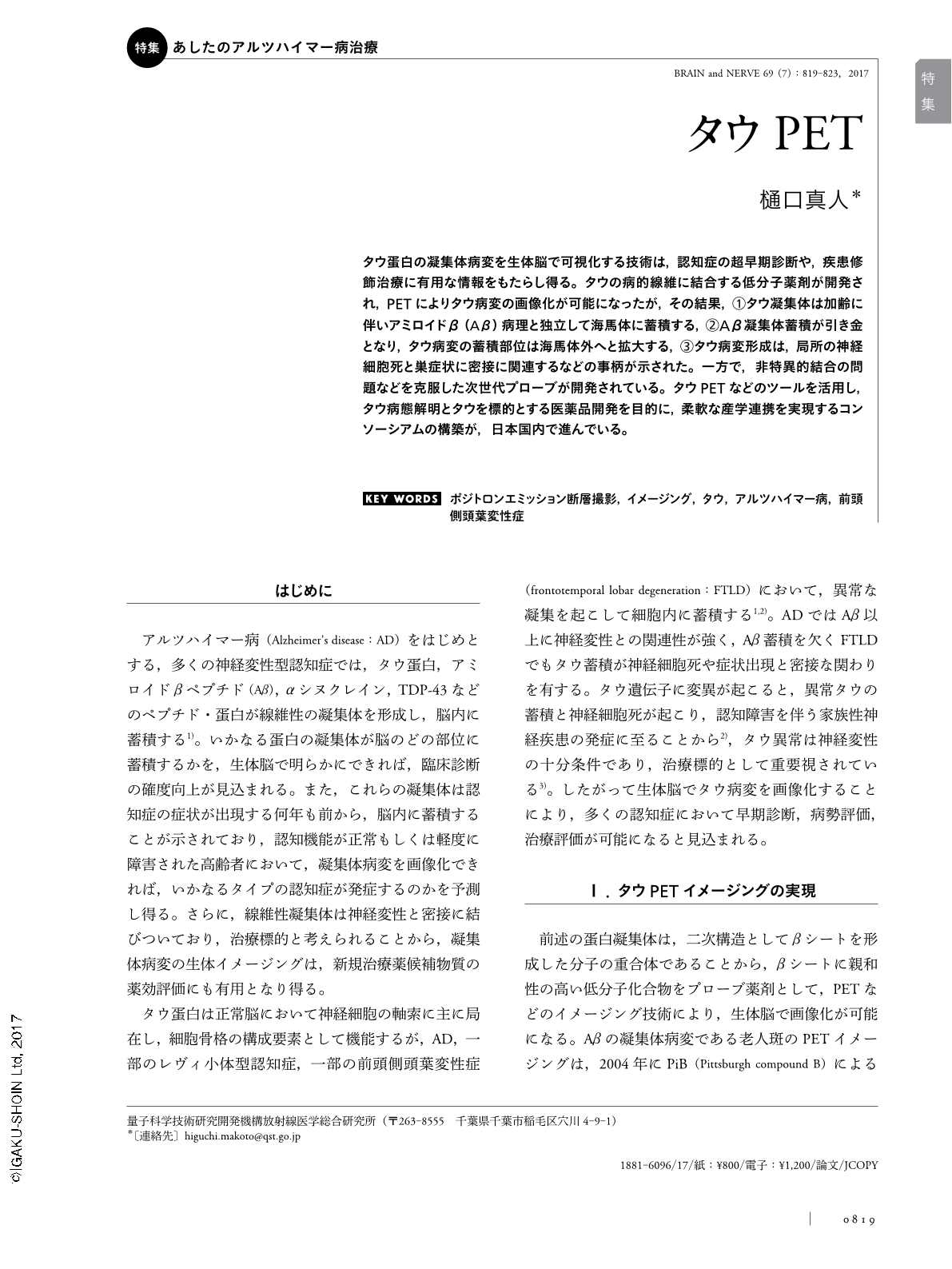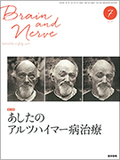Japanese
English
- 有料閲覧
- Abstract 文献概要
- 1ページ目 Look Inside
- 参考文献 Reference
タウ蛋白の凝集体病変を生体脳で可視化する技術は,認知症の超早期診断や,疾患修飾治療に有用な情報をもたらし得る。タウの病的線維に結合する低分子薬剤が開発され,PETによりタウ病変の画像化が可能になったが,その結果,①タウ凝集体は加齢に伴いアミロイドβ(Aβ)病理と独立して海馬体に蓄積する,②Aβ凝集体蓄積が引き金となり,タウ病変の蓄積部位は海馬体外へと拡大する,③タウ病変形成は,局所の神経細胞死と巣症状に密接に関連するなどの事柄が示された。一方で,非特異的結合の問題などを克服した次世代プローブが開発されている。タウPETなどのツールを活用し,タウ病態解明とタウを標的とする医薬品開発を目的に,柔軟な産学連携を実現するコンソーシアムの構築が,日本国内で進んでいる。
Abstract
Accumulation of fibrillar tau protein aggregates is a neuropathological hallmark of Alzheimer's disease (AD) and related neurodegenerative dementias, including a subgroup of frontotemporal lobar degeneration (FTLD). Visualization of tau lesions in the brains of living subjects enables a pathology-based diagnosis of dementing illnesses in the prodromal stage, and offers objective measures of disease progression and outcomes of disease-modifying therapies. With this rationale, diverse classes of low-molecular-weight chemicals capable of binding to a β-pleated sheet structure have been developed to be used for in vivo positron emission tomography (PET) of tau pathologies. Clinical PET studies of AD patients with such tau probes have provided the following insights: (1) Tau fibrils accumulate in the hippocampal formation in an age-dependent manner that is independent of amyloid-beta peptide (Aβ) pathology; (2) The deposition of Aβ may trigger a spatial expansion of tau pathology, in transition from normal aging to advanced AD; and (3) Tau accumulation is intimately associated with local neuronal loss, leading to cortical atrophy and focal symptoms. In contrast, studies of FTLD have shown a limited performance of first-generation PET probes in capturing non-AD-type tau lesions. New compounds have accordingly been developed and clinically tested, proving to yield a high contrast for tau deposits with high specificity. These second-generation probes are being evaluated primarily by pharmaceutical companies, in line with their growing demands for neuroimaging-based biomarkers serving for clinical trials of anti-Aβ and anti-tau therapies. Meanwhile, a consortium flexibly linking academia and industry to facilitate the utilization of research tools, including tau PET probes, has been established in Japan, for the ultimate purpose of elucidating the molecular etiology of tauopathies and creating diagnostic and therapeutic agents based on such an understanding.

Copyright © 2017, Igaku-Shoin Ltd. All rights reserved.


